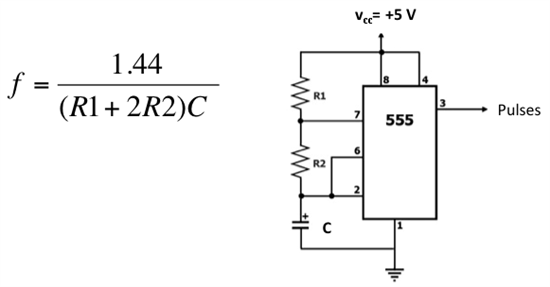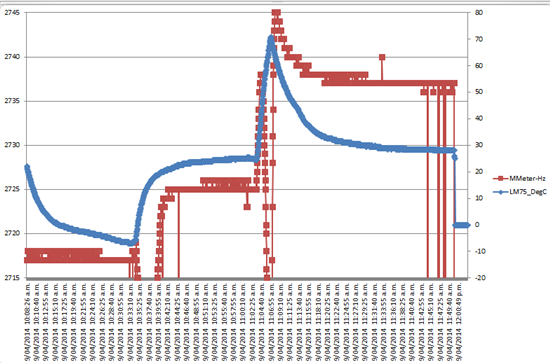Hi,
I have made a simple circuit for measuring capacitance using a 555 timer (TLC555IDG4 - temp. range: -40 to 85 degrees C). The circuit works good at room temperature but when I put it in freezer (-10 degreec C) and heat it up using a heat gun (upto 70 degrees) the frequency changes a lot. I have attached my circuit and the frequency vs temp curve, please take a look and tell me why there are sudden variations in frequency.
The whole test was done using a 150pF polystyrene capacitor.
One more thing, if the datasheet says that the temp. range of the 555 timer is from -40 to 85 degree C, does that mean that frequency should remain almost same in the whole range? If not whats the ppm (error) of this chip, couldn't find it on datasheet?
Waiting for your kind replies :) Thanks.
Saqib



